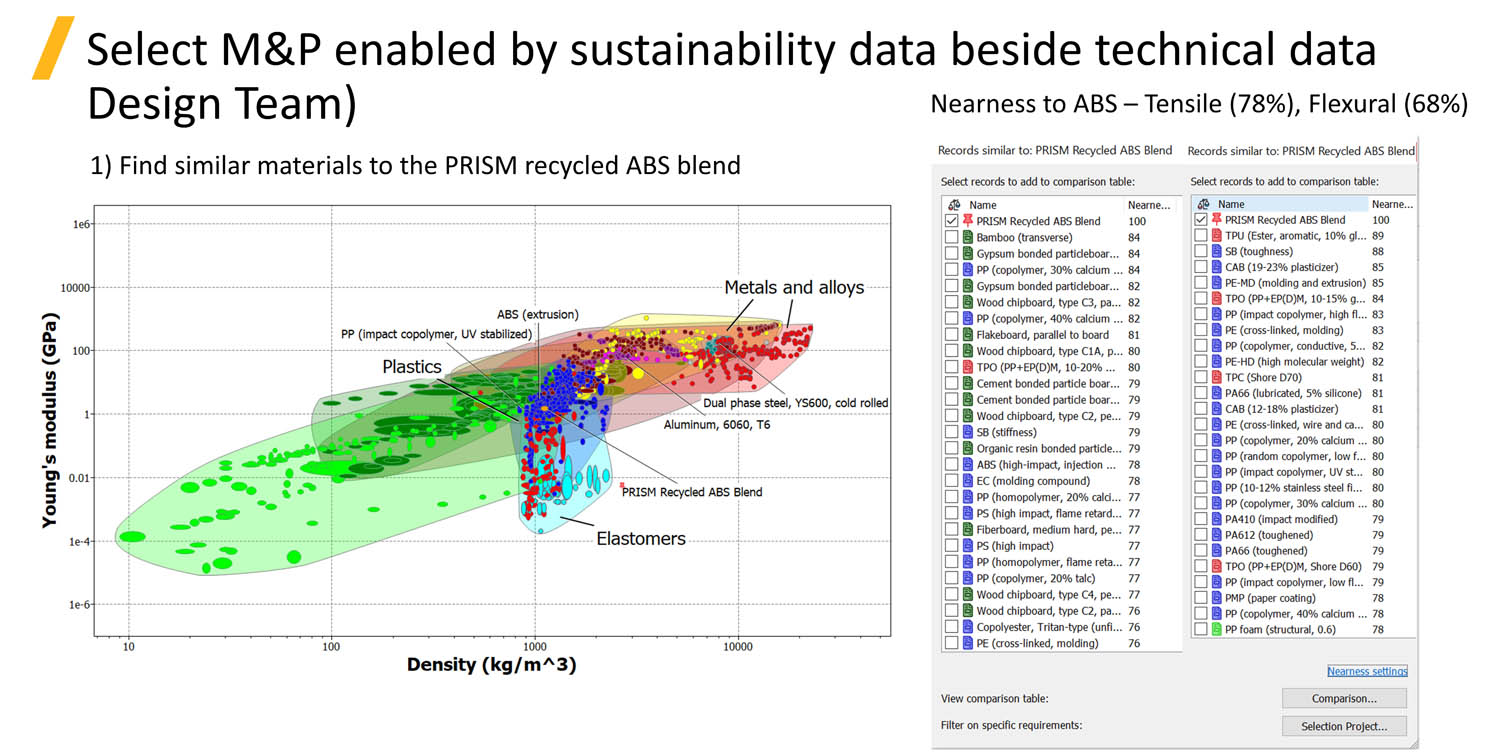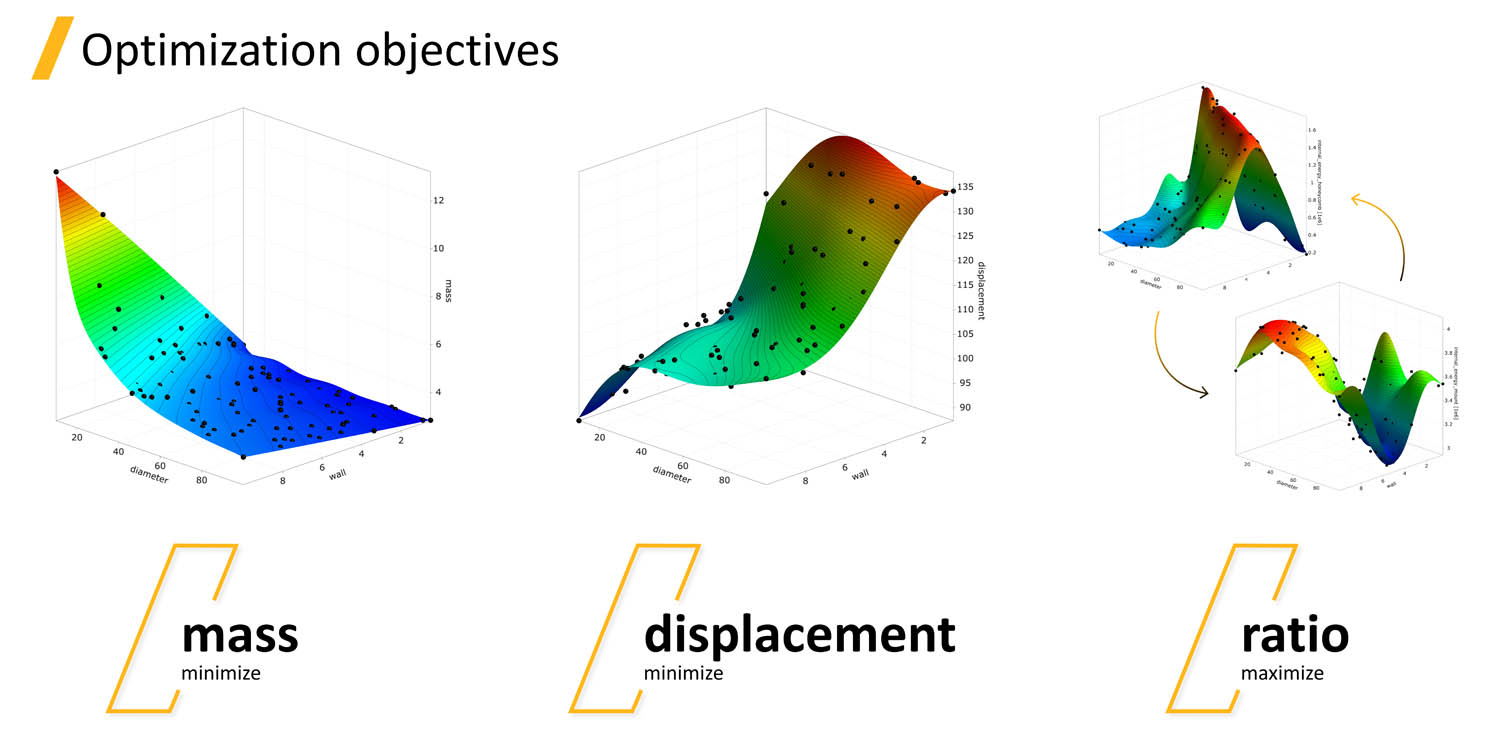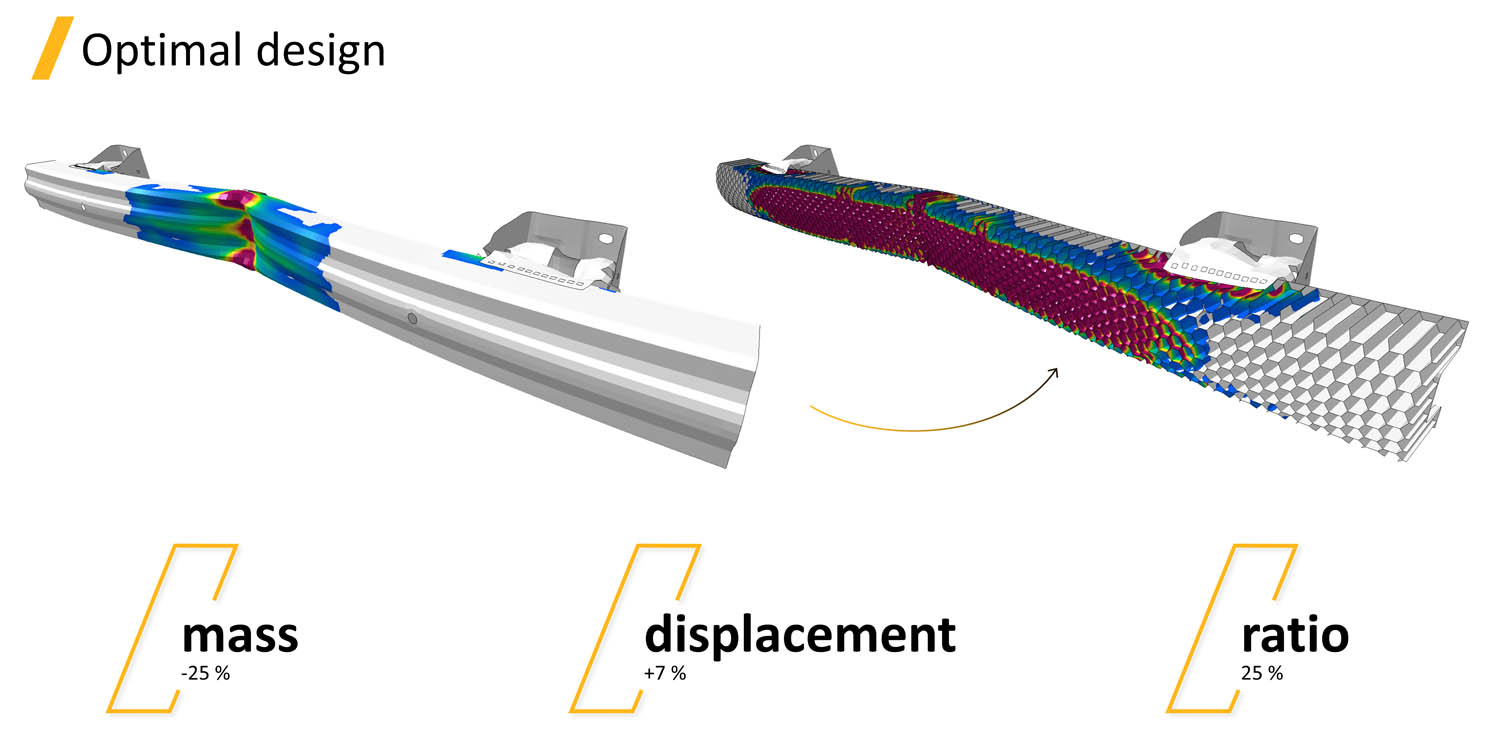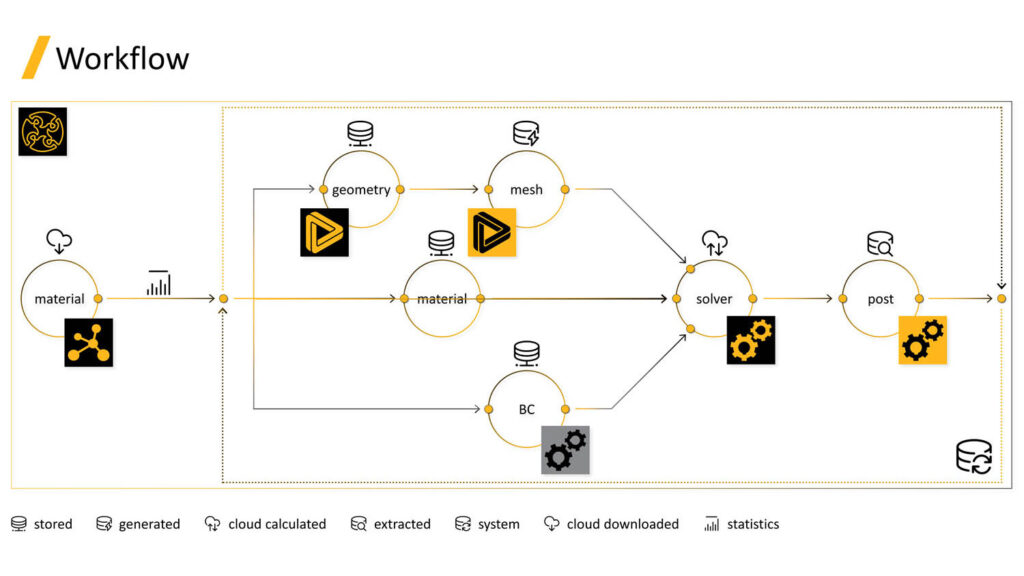A recent collaboration between simulation software developer Ansys, several recycling companies and a producer of automotive parts has demonstrated how recycled plastics could be more widely used in products, to the benefit of the environment
Recycling plastics is an obvious solution to a huge pollution problem, but most of us have only a naïve understanding of how it works. There’s a lot of sorting and chopping involved to make plastic pieces small enough to flow into a mixer, and there are chemical additives used as binders or flow enablers needed to enhance the properties of the resulting material. Even after all that, a recycler still can’t be sure if the recycled plastics will be useful to potential customers seeking to turn them into new products.
Aesthetically, a recycled version will probably not look good enough to be used on the exterior of a product, so it’s typically placed out of view, like behind a car bumper or sandwiched between two pieces of metal.
The recycled plastic may not have the same strength as the equivalent virgin plastic material, and the strength will vary from batch to batch. This is because the recyclable materials in any municipal waste stream vary depending on what’s being thrown away at any given time, and hence are typically a blend of similar plastics.
So, how can recyclers and their customers determine and keep track of the physical properties of recycled plastics and effectively deal with the inherent variability of these properties?
Through a recent project with three UK companies, Ansys believes the answer lies in a process that best combines four of its technologies into a streamlined workflow.

Making it easier
To make it easier for recyclers and their customers to produce viable recycled plastics and use them in products, Ansys collaborated with Impact Recycling, Impact Solutions, and Far-UK to undertake the Plastic Recycling in Stochastic Modelling (PRISM) Project.
Stochastic refers to randomness. It’s in understanding the randomness of the feedstock and the resulting physical properties of the recycled plastic that simulation can be of huge value to the recycling process.
Impact Recycling, which offers a sustainable solution for recycling post-consumer products, can successfully recycle upwards of 80% of the plastic municipal waste it handles. However, that still leaves an expensive 20% on which it must pay taxes to send to landfills or incinerators.
Companies like Far-UK, a producer of automotive parts for niche vehicles, could potentially save a lot of money in manufacturing while offering a more sustainable product by using recycled materials from companies like Impact Recycling. But that’s providing these materials meet the exacting requirements of the original equipment manufacturers (OEMs) to which it sells.
Part of the challenge lies in presenting these materials as a viable alternative to the virgin polymers that automotive OEMs have been using for decades.

“These companies need to understand when they have to use virgin materials and when they can use a recycled material instead,” says Donna Dykeman, R&D manager for collaborative R&D at Ansys. And that’s where Ansys simulation solutions come in, she adds.
The simulation workflow combined four Ansys simulation products: Ansys Granta MI, Ansys SpaceClaim, Ansys optiSLang, and Ansys LS-DYNA. Together, these simulation tools were used to optimise workflows to handle the uncertainty of material properties and screen geometries for applications to replace virgin plastics with recycled ones.
“Granta MI stores the materials data. Then, LS-DYNA was used to create the material card based on test data. The card was validated against test coupon geometries and subcomponent geometries – for example, a beam under various loading conditions. This first step of testing and material card generation was performed by Far-UK,” Dykeman explains.
“Next, we used optiSLang to create a workflow with SpaceClaim and LS-DYNA to vary the geometry of candidate parts and the material properties until an optimal design was reached. When an OEM specifies a property or geometry tolerance that must be met, the outcome of the optimisation process suggests which property requires improvement, and by how much.”

Designed for shocks
Ansys used this workflow to design a plastic honeycomb made of recycled materials to be installed behind the surface of a car bumper to absorb the shock of a crash. After proposing an initial geometry for the honeycomb, engineers performed LS-DYNA crash testing to see how well the structure absorbed and dispersed the energy of the crash.
Ansys optiSLang was used to find the optimal design by minimising mass and displacement while maximising the accumulated energy of the honeycomb.
Through a parametric study involving an iterative series of simulations, Ansys determined the optimal geometry of the bumper – such as the type of honeycomb structure, how thick the cells should be, bumper dimensions, and where mass could be removed from the benchmark steel bumper to achieve the allowable displacement before contact with more trunk components.
“Ansys optiSLang is able to help designers find where the sweet spot of a design is through automation by running hundreds to thousands of simulations until it converges on an optimal design,” says Dykeman.

Wide impact
The impact of the project was widespread. Costs for manufacturing the recycled material fell, while production levels grew from 400 to 700 tonnes a year, allowing recyclers to meet the high demand-versus-supply of recycled plastics in light of the 30% tax on virgin plastics for consumer packaging.
Far-UK, as a producer of automotive parts, benefited from the chance to explore how to manage the variability of materials from recyclate in design, with the aim of introducing materials with lower costs and carbon footprint in the future. It also used Ansys simulation tools to generate and validate the material card for use across wider applications.
PRISM showcases how material circularity and better eco design can be achieved by applying the right solvers connected with a simulation digital thread, tidying up the issues of highly variable material properties.
This article first appeared in DEVELOP3D Magazine
DEVELOP3D is a publication dedicated to product design + development, from concept to manufacture and the technologies behind it all.
To receive the physical publication or digital issue free, as well as exclusive news and offers, subscribe to DEVELOP3D Magazine here






